American Southwest is known for indigenous heritage, Spanish colonial history and beautiful National Parks. This article presents “must see places” in Santa Fe, New Mexico peppered by historical facts. Also it can be used as self guided tour of historical places in downtown Santa Fe – the oldest capital city in United States and the oldest European community west of the Mississippi.
The United States is fairly “new” country, it is only 246 years old… of European history, I should add. Prior to invasion of “white people” the continent was home to thousands of indigenous tribes. Today’s Santa Fe combines legacies of 5 distinct historical periods: Native American, Spanish Colonial, Mexican, US Territorial, and finally Statehood periods.
Quick reference for landmarks to visit:
- Loretto chapel
- San Miguel-US oldest church
- US oldest house
- Cathedral Basilica of St. Francis of Assisi
- La Fonda on the Plaza– US oldest hotel
- Governor Palace-US oldest government building
- Georgia O’keeffe museum
Historical timeline
Tourist visiting the New Mexico’s capital can notice many plaques of “oldest” things around, like the oldest house, the nation’s oldest community celebration, the oldest public building. Like European capitals with history on each corner, the story of Santa Fe can be learned by simply strolling in downtown. For nerds like me… ahem… I meant history aficionados, below is the timeline to better understand the region in the full context.
500 AD From 5th century onward New Mexico went under a number of comparatively rapid changes. The people became increasingly restricted to small areas resulting in the development of many regional differences in architecture, ceramics, and crafts.
1610 Official founding of La Villa Real de Santa Fe de San Francisco de Asis, the third oldest city in the USA, after San Augustin, Florida and Jamestown Virginia.
1680 Pueblo revolt, the only successful revolt by Native Americans.
1692 Spanish reconquest of the city, making it the Northern most frontier of viceroyalty Nueva España.
1821-1848 Mexican period signified the end of trade isolations policies enforced by Spanish Empire. During this time was established l,000-mile-long Santa Fe Trail, atracting trappers and traders into the region.
1848-1912 Territorial period, 62 years journey to statehood. To become a state meant advantages of Federal support. The arrival of the railroad meant economic revolution for the region.
1912 Becoming 47th star on the US flag.
Interesting Historical tidbits.
Santa Fe (from Spanish Holy Faith) was northern most part of Spanish Empire in Americas. It was named so to honor old town Santa Fe in Granada Spain, which was built by Ferdinand and Isabella, the cities are now sisters.
Do you know why Native Americans of New Mexico called pueblos?
They were called pueblos for stationary settlements, Vasquez de Coronado coined this term to describe the concentration of small dwellings in the area in 1540.
In Spanish pueblo means village/people.
Plaza Santa Fe (a public square with markets) is and has been the center of life for thousands of years. Native Americans used it for social interactions, Spanish colonists based administrative center on its ground, and today’s tourists are attracted to the cultural, gastronomical, and artsy scenes of the same plaza. Over 400 years of history in one place.
The distinct architecture style that most associate with New Mexico is called Spanish Pueblo Revival. National Park Service, Architecture and Buildings department describes it the best:
“Pueblo revival style is characterized by influence from Spanish Colonial, Mission, and Indian Pueblo architectural forms. It was very popular in the 1920s and 30s in the American Southwest, particularly in New Mexico. Pueblo revival structures generally have flat roofs with parapeted walls, gently rounded walls, stucco and thick, round roof beams known as ‘vigas’ which extend out beyond the walls and roof lines.”
Sightseeing places to visit in Santa Fe
Loretto Chapel
The first Gothic building west of the Mississippi, was modeled after Sainte Chapelle in Paris and built at the request of archbishop Jean Baptiste Lamy between 1873-1878. The chapel is best known for its choir loft staircase called miraculous due to its two complete spirals without center or side supports and due to the legend of its construction.
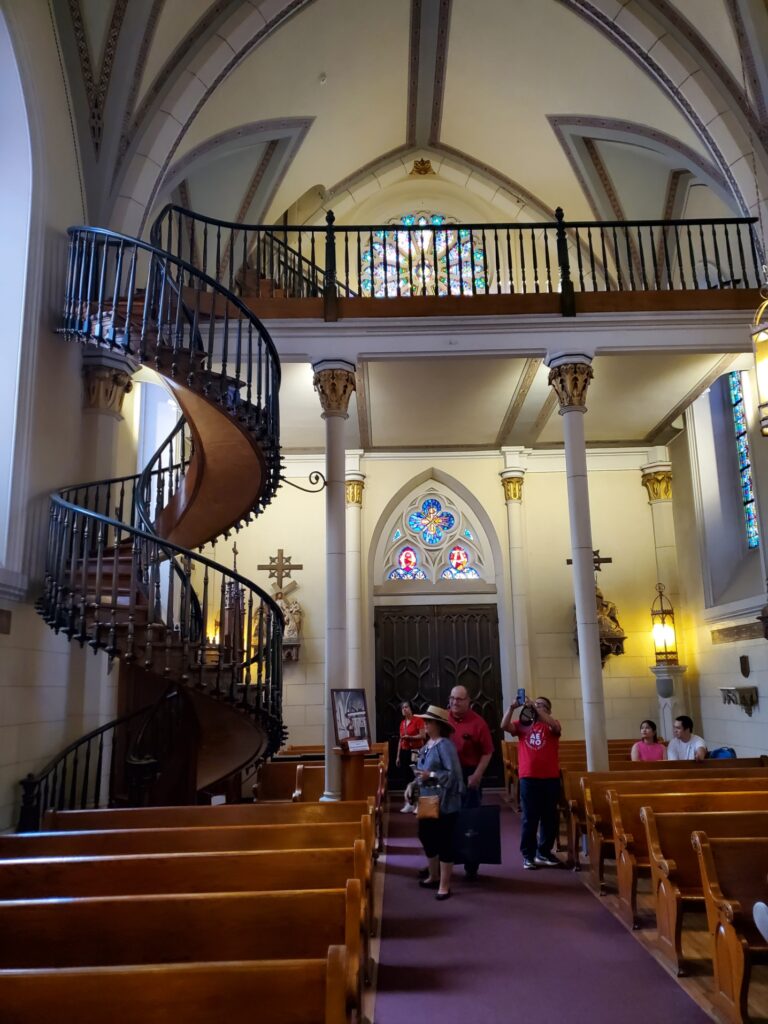


San Miguel church
Regarded as the oldest Christian church site in the nation.
Centerpiece of El Barrio de Analco National Register Historic District in Santa Fe, New Mexico
During over 400 years – first under the rule of imperial Spain, then Mexico, and finally the United States – this chapel dedicated to the Archangel Michael has been many things to many peoples: place of worship for diverse groups of Native Americans, infirmary for Franciscan missionaries, target for autocratic officials and exploited Pueblo groups, military chapel, unique venue for talks, concerts and preservation award ceremonies, sanctified space for Sunda Mass in Latin and English.
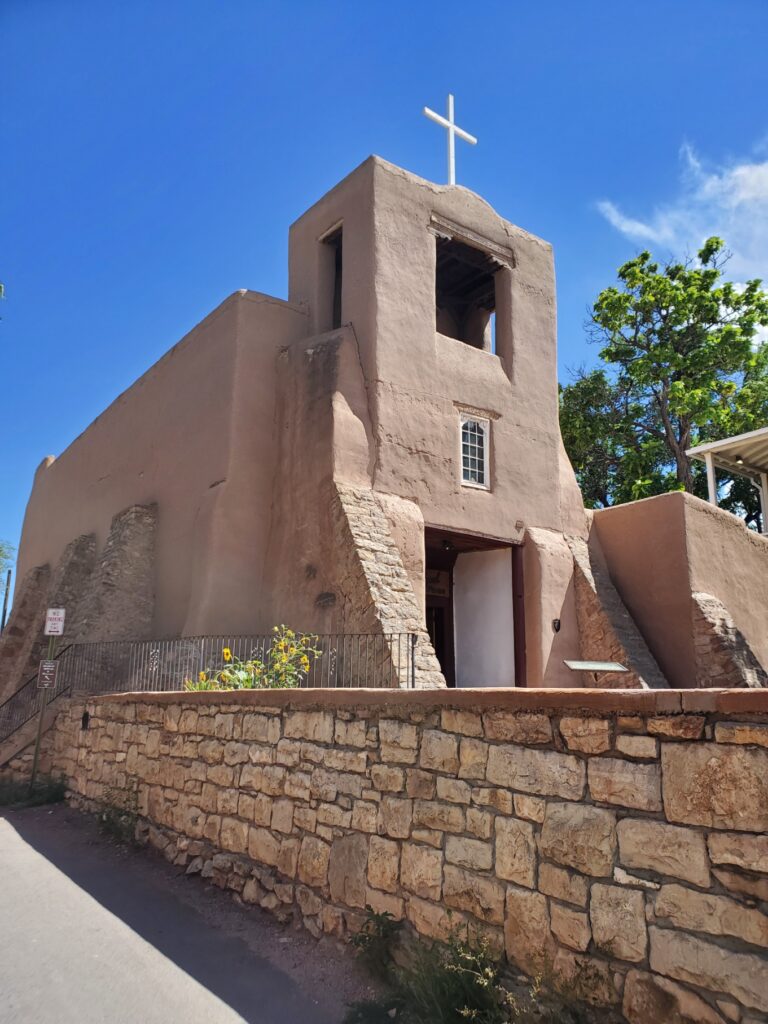
The United State’s oldest house
This building claims to be the oldest house in the USA. Sun dried adobe bricks were used as the building blocks for homes built in this territory. Adobe was, and still is, made of common dirt, straw and cow manure. Straw and manure act as bonding materials that keep the bricks from falling apart. Today it hosts a small museum and gift shop.
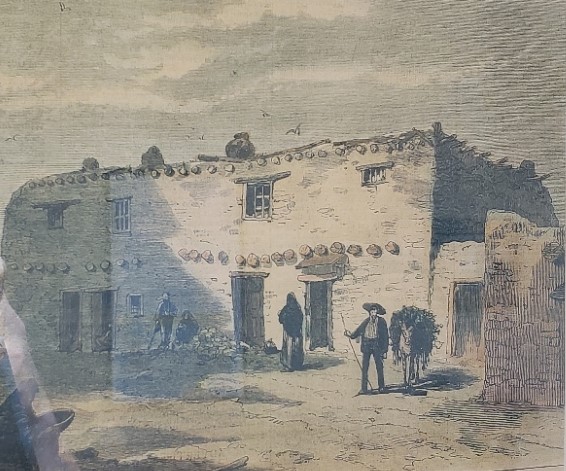
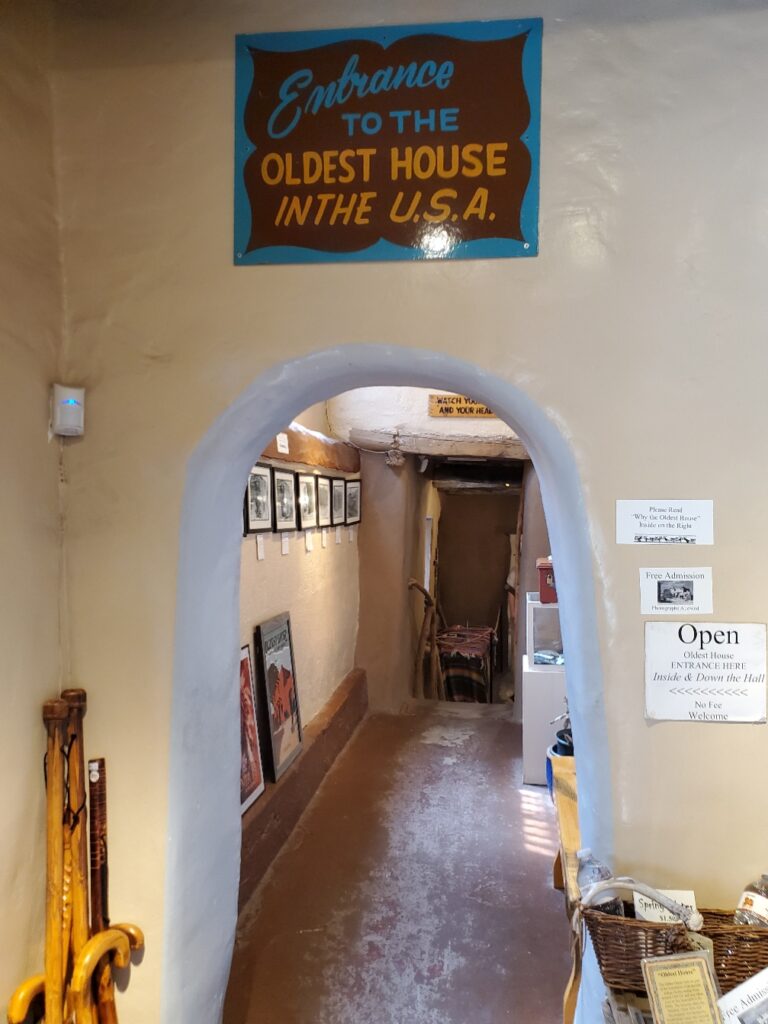

Cathedral Basilica of St. Francis of Assisi
Roman Catholic cathedral, was built between 1869-1886 on the site of older adobe church. Another architectural achievement of Archbishop Lamy. Among predominantly Spanish Pueblo Revival designed buildings the architecture of this cathedral offers different style and the size that catches the eyes.
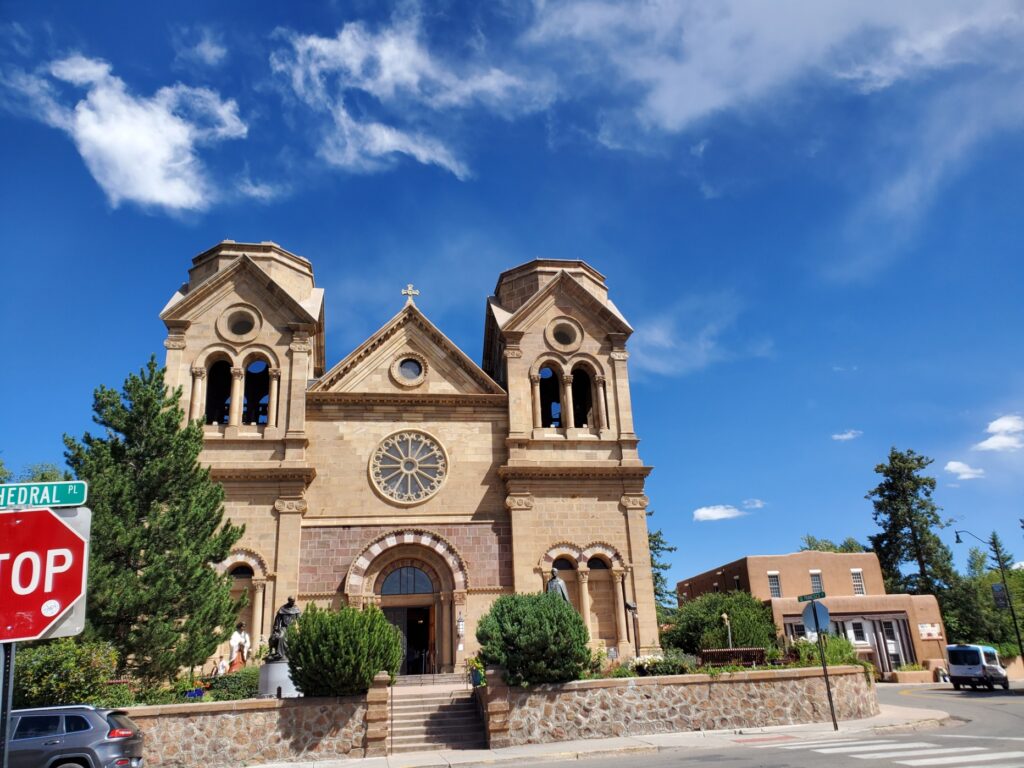
La Fonda on the Plaza
La Fonda on the Plaza hotel is celebrating centennial this year. Built in 1922, the hotel is a living history. It hosts a restaurant, art galleries, and a bar. Go talk to one fo the hotel’s concierge because they offer free historical tour of the property. I highly recommend having lunch at La Plazuela restaurant, treat yourself with magic and travel back in time to the beginning of 20th century. City records indicate that the hotel sits on the site of the town’s first inn, established when the city was founded by Spaniards in 1607, making property the oldest hotel corner in America.
The Palace of the Governors
Dating back to 1610, the Palace is the oldest public building in continuous use constructed by European settlers in the continental United States. Built by the Spanish for colonial administration, the structure has been extensively modified over the centuries to meet changing needs and stylistic interests. Today this building hosts a beautiful museum of New Mexico’s history.


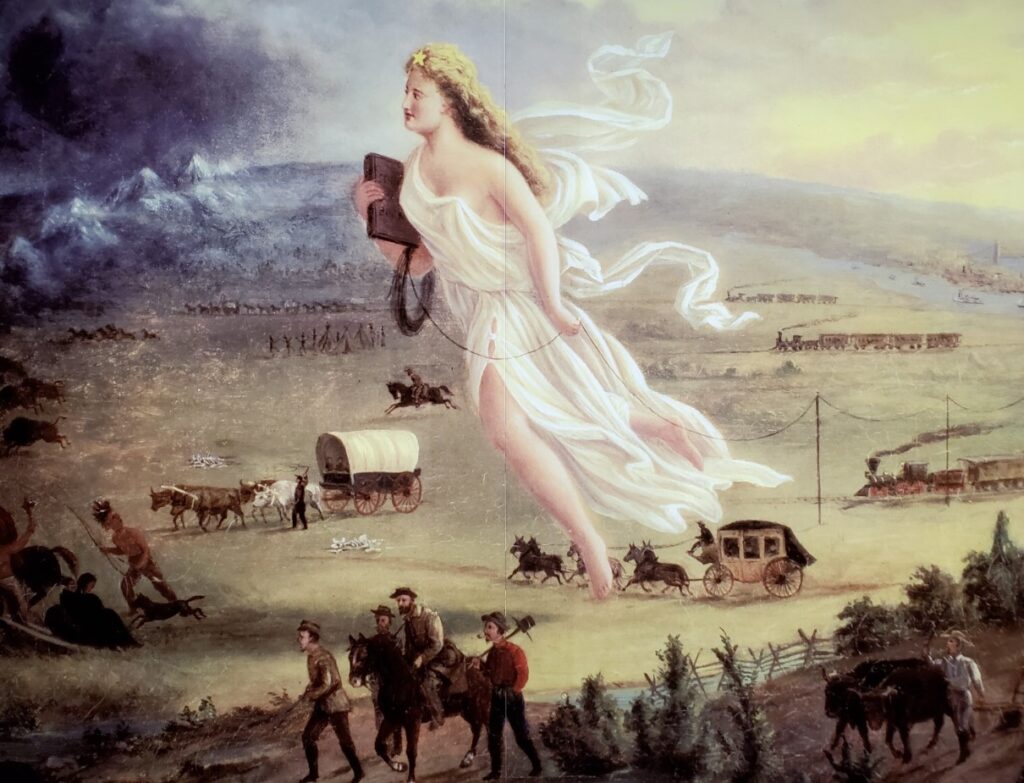
O’keeffe Museum

Georgia O’keeffe is called the mother of American Modernism and known for painting enlarged flowers, still life, and animal skulls with flowers. Unless a visitor an avid art lover, I wouldn’t recommend stopping over this museum. Expensive ticket, simplified narrative, limited art collection – is my verdict. But again, I don’t understand much of the art anyway.
American modernism much like the modernism movement in general, is a trend of philosophical thought arising from the widespread changes in culture and society in the age of modernity.
American modernism is an artistic and cultural movement in the United States beginning at the turn of the 20th century, with a core period between World War I and World War II.
Like its European counterpart, American modernism stemmed from a rejection of Enlightenment thinking, seeking to better represent reality in a new, more industrialized world.
Wikipedia article
This concludes the sightseeing guide. I highly recommend visiting New Mexico and Santa Fe in particular. The art scene, architectural buildings, colonial context, Native American legacies make it the most significant historic city in the American West.

